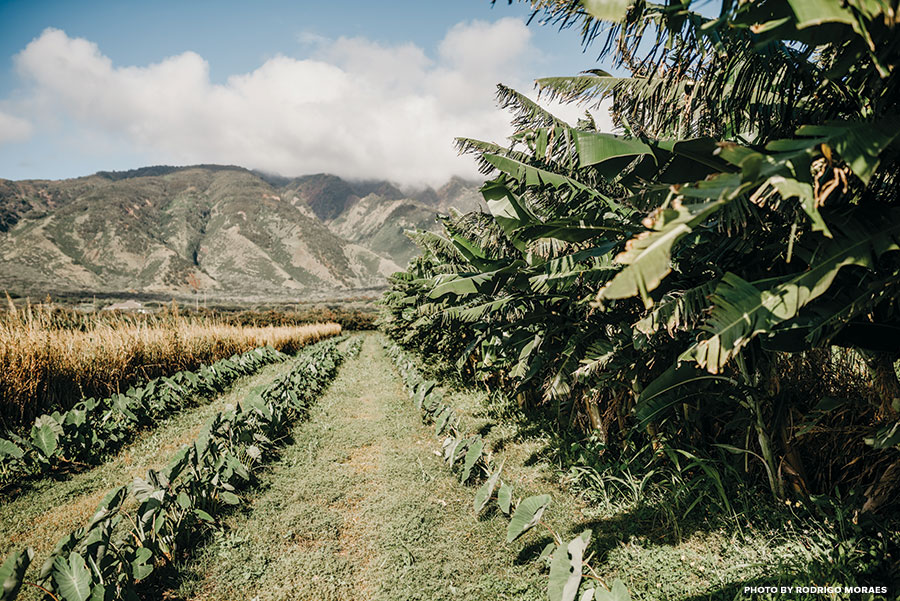Maui’s Changing Landscape | Part One | Part Two | Part Three | Part Four | Part Five | Part Six | PART TWO in our yearlong look at the future of Maui agriculture
Story by Lehia Apana | Photography by Rodrigo Moraes

It’s 11 a.m. and Bobby Pahia retreats from the baking sun to inside a corrugated shipping container that serves as his farm headquarters. Outside, the famous Waikapū winds flex limber kalo stems toward the dusty terrain.
Pahia looks every bit a farmer. Covered in mud-stained jeans and a T-shirt, the sixty-two-year-old Hawaiian sinks to the floor and outstretches his weatherworn boots. His robust frame and bronzed skin are proof of steady ten-hour workdays.
Pahia scans his kalo (taro) fields, and for a moment he is transported to his childhood in Waiāhole, a small town on O‘ahu’s windward side known for its abundant lo‘i kalo (wetland taro patches).
“I have visions of going to my grandma’s house . . . [she] always had a big bowl of poi on the kitchen table,” he recalls, speaking of the Hawaiian staple made from mashed kalo. “Now days, it’s a luxury item. My mission is to get kalo and poi back on our people’s tables.”
VIDEO: Kalo farmer Bobby Pahia takes you into his fields to learn about the plant that fed an ancient people.
Pahia’s Hoaloha Farm is a subsidiary of Nā Hoaloha ‘Ekolu, the restaurant group that encompasses Old Lāhaina Lū‘au, Aloha Mixed Plate, and Star Noodle in Lahaina; and Leoda’s Kitchen & Pie Shop in Olowalu. Every month, Pahia’s farm supplies 5,000 pounds of kalo to its parent company, cultural practitioners, and occasionally as poi to the general public at the Upcountry Farmers Market.
Pahia is also the president of Hawai‘i Farmers Union United’s Mauna Kahalawai chapter. He’s one of several Maui farmers working to reestablish kalo and other traditional Hawaiian foods known as “canoe crops” because they were carried in the voyaging canoes of the early Polynesians who populated these islands. It’s a pursuit that they hope will not only nourish people, but a culture as well.





